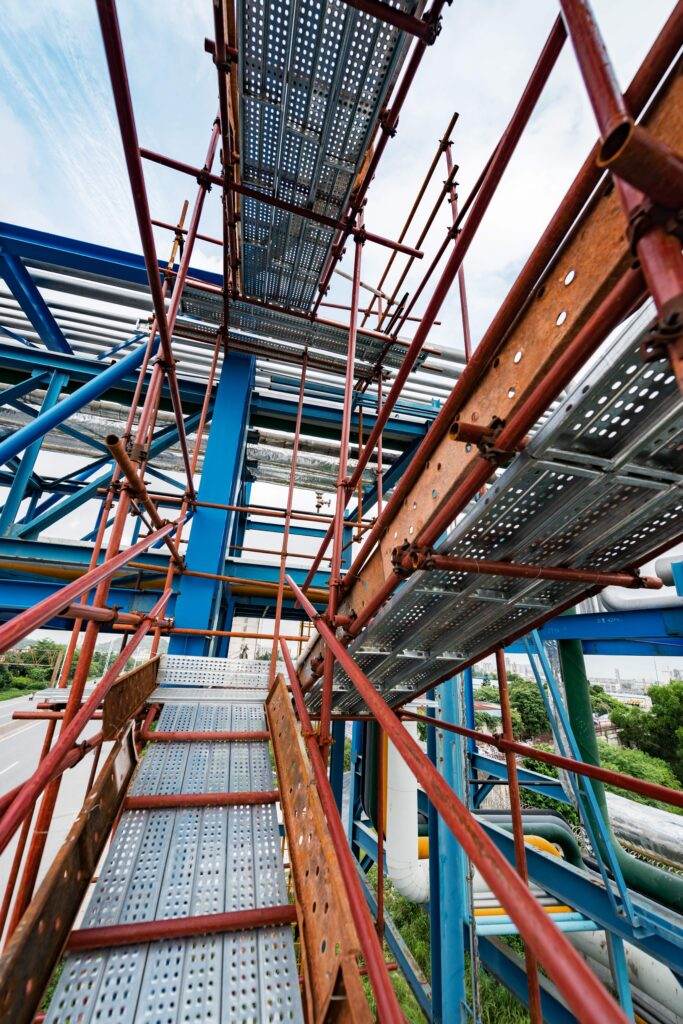Scaffolding is an essential component in the construction industry, providing a temporary work platform for workers to complete various tasks at height. However, scaffolding can also pose a significant risk to workers if proper safety measures are not in place. That’s why it’s essential to understand the importance of scaffolding safety and take all necessary precautions to protect workers and prevent accidents.
Introduction to Scaffolding Safety
Scaffolding safety is a crucial aspect of construction work, as it involves working at heights, which can be a hazardous environment. The Occupational Safety and Health Administration (OSHA) estimates that there are over 4,000 injuries and 60 deaths each year related to scaffolding accidents.
To ensure scaffolding safety, it’s crucial to follow all safety regulations, as well as take extra precautions such as using personal protective equipment (PPE) and conducting regular inspections. This article will provide a comprehensive guide to scaffolding safety, including the following topics:
- Types of scaffolding
- Safety regulations and standards
- Essential components of scaffolding
- Inspections and maintenance
- Personal protective equipment (PPE)
- Common causes of scaffolding accidents
- Frequently asked questions (FAQs)
Types of Scaffolding
There are various types of scaffolding, including:
- Supported scaffolding: This type of scaffolding is supported by brackets and poles, and is the most common type of scaffolding used in construction.
- Suspended scaffolding: This type of scaffolding is suspended from a building and used for exterior work, such as window washing or painting.
- Mobile scaffolding: This type of scaffolding is equipped with wheels or casters and is used for temporary work platforms.
Safety Regulations and Standards
Scaffolding safety is regulated by OSHA, which sets standards and guidelines to ensure workers are protected while working at heights. The most important regulations and standards include:
- Scaffold must be able to support its own weight, as well as four times the maximum weight that will be placed on it.
- Guardrails must be in place to prevent workers from falling.
- Workers must be provided with a safe way to access the scaffold, such as a ladder or stairway.
- Workers must be trained in scaffolding safety and be aware of the hazards involved in working at heights.
Essential Components of Scaffolding
The essential components of scaffolding include:
- Base plates: These are placed at the bottom of the scaffold poles to provide stability.
- Uprights or standards: These are the vertical poles that support the scaffold.
- Ledgers: These are the horizontal poles that connect the standards.
- Braces: These are used to provide stability to the scaffold.
- Platforms: These are the flat surfaces where workers stand to complete their tasks.
- Guardrails: These are installed around the perimeter of the scaffold platform to prevent workers from falling.
Inspections and Maintenance
Regular inspections and maintenance are essential to ensure scaffolding safety. The following should be checked during inspections:
- Structural integrity: Inspect for cracks, rust, or other signs of damage to the scaffold.
- Stability: Ensure that the scaffold is level and stable.
- Guardrails: Check that guardrails are securely in place and undamaged.
- Platforms: Check that platforms are free of debris and in good condition.
- Connections: Ensure that all connections between components are secure and tightened.
- Personal protective equipment (PPE): Ensure that workers have access to and are using appropriate PPE, such as hard hats, safety harnesses, and fall protection systems.
It’s recommended that scaffolding be inspected daily before use and also after any changes or modifications have been made. Any damage or deficiencies found during inspections should be immediately repaired to ensure scaffolding safety.
Personal Protective Equipment (PPE)
Personal protective equipment (PPE) is a crucial component of scaffolding safety. Workers should always wear hard hats, safety harnesses, and other appropriate PPE while working on scaffolding. Hard hats provide protection against head injuries, while safety harnesses prevent workers from falling. Fall protection systems, such as safety nets or guardrails, should also be in place to prevent falls.
Common Causes of Scaffolding Accidents
Scaffolding accidents can occur for various reasons, including:
- Unstable scaffolding: If scaffolding is not properly erected or maintained, it can become unstable, leading to accidents.
- Overloading: Overloading scaffolding with materials or workers can cause it to collapse.
- Falls: Falls from scaffolding are one of the most common causes of scaffolding accidents.
- Lack of PPE: Not wearing appropriate PPE, such as hard hats and safety harnesses, can result in serious injuries in the event of a fall or other accident.
Frequently Asked Questions (FAQs)
- What is scaffolding safety? Scaffolding safety is the practice of ensuring workers are protected while working on scaffolding. This includes following safety regulations and guidelines, using appropriate PPE, and conducting regular inspections and maintenance.
- Who regulates scaffolding safety? Scaffolding safety is regulated by the Occupational Safety and Health Administration (OSHA).
- What are the essential components of scaffolding? The essential components of scaffolding include base plates, uprights or standards, ledgers, braces, platforms, and guardrails.
- How often should scaffolding be inspected? Scaffolding should be inspected daily before use and after any changes or modifications have been made.
- What is the most common cause of scaffolding accidents? Falls from scaffolding are the most common cause of scaffolding accidents.
Conclusion
Scaffolding safety is crucial in the construction industry, as it involves working at heights, which can be a hazardous environment. To ensure scaffolding safety, it’s essential to follow all safety regulations and guidelines, use appropriate PPE, conduct regular inspections and maintenance, and be aware of the common causes of scaffolding accidents. By following these guidelines, workers can be protected and scaffolding accidents can be prevented. Scaffolding Safety is a vital aspect of construction work, and all workers and employers should take it seriously to ensure a safe working environment.








